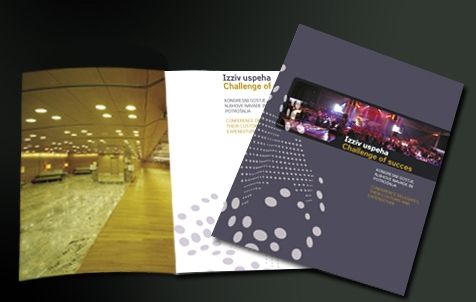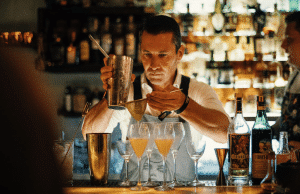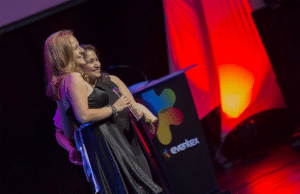By Darja Brečko Poženel, Art Director, Independent Graphic Design Professional

Darja Brečko Poženel is a university graduated designer of visual communications and the winner of students Prešeren Award. She cooperated with renowned Slovenian design agencies for many years. For the last eight years she managed the image and visual communications for well-known Slovenian companies, such as RTV Slovenia, Mercator – Pekarne Grosuplje, and other smaller ones. She is the art editor of the magazine Oddih and cooperates in many tourist projects. More recently she’s been lecturing at the Academy of Design in Ljubljana, course Visual communications.
Q: Where is the first place we notice design promoting meetings and events?
In the advertised invitations to the event, of course – online, print, e-mail and mail. The invitation usually consists of a “header” – the corporate design of the event – and then basic information about when and where the event will take place. Sounds simple, sounds familiar. But can the invitation be convincing enough so our core audience will believe our promise of a once in a lifetime event they can’t afford to miss? Will it raise interest?
Of course we want a good response to our invitation and ensure large attendance. At the same time we want all of the applications prepared for the event to be attractive and convincing for the participants. In the best case scenario they would remember all printed applications, which usually cost us a lot. All of this is possible and can be realized if we know how to draft the visual communication of an event, starting with corporate design.
Other than the theme of the event we have to establish who our key audiences are when planning the design. Are they experts of a specific filed or are they off different occupations? There is a totally different visual language recognized by the pharmaceutical industry in comparison to beekeepers, a group of ministers for technology or tourist experts. The narrower the group the easier we plan the visual language of our message. This is what design is all about – forming a message which our core audiences will understand and notice immediately. In the case of meeting industry we are mostly addressing experts in specific fields and have to adapt to their needs.
Q: Is there a second chance for a first impression?
You have probably heard this proverb many times and have experienced it firsthand. In the world of professionals – potential clients and partners, our presentation is of crucial importance. Missed opportunities are that much more painful since the reputation of the whole company or organization can suffer. Also, fixing mistakes and bad impressions takes far too long. And you certainly don’t have that much additional time. Therefore, a good visual program is of crucial importance, since it will establish recognisability with our key audience.
Q: How do we achieve that?
A symbol or logo of our event has to clearly and unambiguously associate the theme of the event at a symbolic level. The symbols must consist of clear and simple shapes – the more complicated it is and the more elements it includes, less clear and recognizable it will be. If we take a look at some of the most beautiful and recognizable symbols in the world, such as the familiar sign of Mercedes, we can clearly see the answer to this question.
Considering the content of the event the choice of colours, typography and composition is very important. All of this impacts the persuasiveness of our corporate design and of our first official ambassador, responsible for creating a first impression – the invitation.
Planed and consistent corporate design establishes trust and reputation
How much would you trust an organizer when you received a dingy piece of paper, where all of the information is screaming one over the other and the colours match those of a flyer from your local discount store? You would probably check twice before deciding to attend the event. When designing an image and applications the grading of information is very important as well. You’ve probably been faced with a dilemma of how to sort the information, since all of it is so important.
You have to place the name of your organization, possibly the name of the partners, name of the conference, location, date, another important sponsor and three smaller ones. Sure you can leave out the smallest sponsors, yet what do you do with important ones, not to offend anyone and still give the participants an idea of the contents? This is where a designer comes in and creates a wholesome product using gradation and composition. This is the only way you will achieve an impression of professionalism. And what is professionalism other than making sure you are reliable, serious, professional and punctual. This is exactly what your business partners want to hear from you.
It is also important all the materials are styled and designed in the same manner and that they immediately give the impression of coming from under the same roof. It’s probably not necessary to point out how important the quality of printed materials is. Just remember the feeling of holding a neatly designed, beautifully printed brochure on gorgeous paper, so you find it hard to throw it away. This is the level you want to achieve, yet it is mostly too expensive. Not necessarily. A good designer knows the way to use simple methods to achieve these goals.
Well thought out visual communication strongly influences the impact of out messages. Therefore, it is our professional duty to make sure of that and enable our future reputation and business success.














